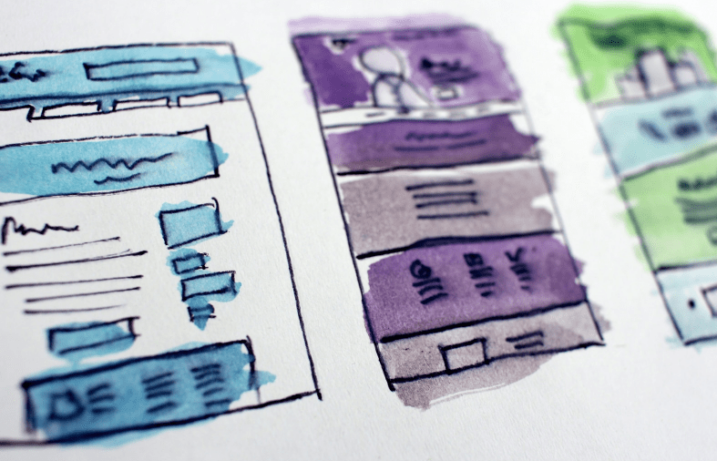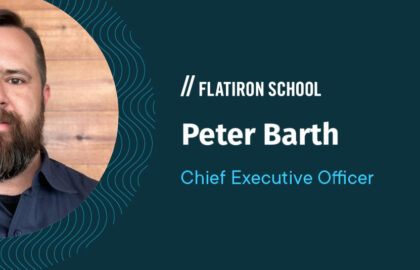Product Designers create appealing and usable products that meet the needs of customers. A product designer’s role is to analyze product goals from the conceptual phase and translate them into a functional design that appeals to customers.
As the product moves through the design process, the designer will also incorporate feedback and improve product functionality.
5 Visual Designer Responsibilities
1. Understand and Communicate the User Experience in a Visual Process
Many companies use a comprehensive market research and development process to brainstorm new product offerings for their clients. The product team creates high-level concepts and goals, which they communicate to UX / UI designers. A Product Designer then conducts research on customers’ wants and needs and provides solutions to create a quality product.
Once you as the designer have researched client needs, you will assess how the product solves problems and fits into the market. You can then begin setting the initial design guidelines.
2. Conceptualize the product
Building on their understanding of customer needs, product designers create the initial concept for each product. In this stage, a digital product designer strikes a balance between programming and artistry by considering the functionality and visual style of the final product.
You might start out with detailed sketches that showcase every possible feature or function that can be included in the final product. From there, you can eliminate features that don’t enhance the user experience. Once you have a list of must-have features and functions, you can use it to conceptualize the product. This stage of the process involves specifying the design requirements, geometry, code, and other elements included in the final design.
With this information in mind, the product designer creates wireframes for apps, 3D models, or computer-aided designs.
Digital Designers must also be familiar with naming conventions to accurately organize these elements.
3. Create functional prototypes
From these initial concepts and specifications, product designers create a working prototype. A prototype usually starts with a wireframe which you can modify to let users interact with the most basic form of the app or digital product. These prototypes are frequently used to pitch the product to company executives or to gain funding for a new company. Using a series of visualizations such as sketches or 3D models, product designers convert their initial mockups and wireframes into usable apps. These apps are then tested by the product team.
4. Interpret feedback to modify the design
The prototyping phase will give you a good sense of how the final product will work and also identify potential flaws in the design. After the product team interacts with the prototype, they will give feedback on whether the product performs as expected. You will use this feedback to modify the design by addressing pain points and improving overall functionality. Design thinking plays a key role in developing a product that solves a problem for users.Your product will likely undergo the review and modification process multiple times before you develop the final version. Each modification can highlight different features in the design. Additionally, modifying one part of the design can change the usability of other parts of the product.
5. Communicate with the design team
Once a prototype has been approved and is ready to be produced, the project may be handed off to an engineer. Whether you are completing the final design yourself or passing it along to another person, your design should be easy to follow and execute.Your final design should also include the specifications needed to create a product that functions as intended. But you should also be available to answer any questions about your design and make any further design decisions that come up.
4 types of Product Design deliverables
1. Journey maps
A journey map is a data visualization tool that aligns the user experience with a digital product. As a product designer, you must consider each step in the customer’s decision-making process, focusing on the problems that would lead them to buy your product. The journey map is created during the conceptual design phase and serves as a way to analyze customer needs so you can address them during the design process. To create accurate journey maps, you should have a thorough understanding of your market.
2. Wireframes
A wireframe is the schematic design of a website or an app. It’s one step above a sketch, serving as a simplified version of the final app, website, game, or other digital product. It is similar in nature to an architectural blueprint in that it helps stakeholders visualize the final outcome without a physical product or prototype.
The wireframe serves as the basis of content and functionality. It is used to design the overall layout and structure of a digital product. Without a well-structured wireframe, your website or app could be confusing or cluttered.
3. Prototypes and mockups
This deliverable is used as a visual aid to demonstrate the final product and its functionality. Often, prototypes are used to approve a product for final design and production. They are also used to get funding for various projects. It is important for a prototype to be functional so that it leaves an impression on those who interact with it. Prototypes can be low-fidelity or high-fidelity.
They allow you and the design team to evaluate design elements before the product is built. While a prototype can be as simple as a wireframe, its interactive component lets the user replicate the customer experience. It’s easier to share concepts and gather customer feedback from prototypes because they can be modified more easily than a final product.
4. High-fidelity Designs
In some cases, a company or client might want a high-fidelity, interactive prototype. High-fidelity designs are close to complete and often serve to work out final bugs and glitches in an app. These designs include all color schemes, graphics, and other design elements. High-fidelity designs usually come into play after the design has gone through several rounds of feedback. In the earliest design stages, most critical stakeholders will have a lot of suggestions for features to add or remove from the design. High-fidelity designs take more time and effort to develop and are not often used until the product is in the last stages of development.
Digital UX / UI Design Salaries in 2022
Product design can be a lucrative career. According to the U.S. Bureau of Labor Statistics, the average salary ranges from around $40,000 to around $145,000 per year. In 2020, the median annual wage was $77,200.
Your salary will vary based on the industry and company location. A product designer in the San Francisco Bay area, for example, is likely to make more than a product designer in Austin, Texas. Pay is also based on experience. As you collect a portfolio of projects and build a reputation as a reliable, innovative product designer, you will earn more than an entry-level designer just starting out.
Job outlook for Product Designers
Digital product design is expected to grow by 8% through 2029, making this a good field in which to start a career. Product designers specializing in applications and other technology for high-growth fields will enjoy a larger pool of job prospects.Mobile devices, smart devices, e-commerce, and other digital tools that enhance daily life have made product design a hot career field.
Technology impacts nearly every aspect of life in the modern world, which makes product design necessary to the modern business. Digital product designers can work in industries anywhere from the medical field to video game development. Whatever your passion, you can likely find a product design opportunity to create technology that moves your field forward.
How Flatiron School can help you become a User Interface Designer
If you’re ready to start a career as a product designer, our Product Design program will teach you the skills you need to get a job in this profession.
At the end of the course, you’ll know how to use standard tools, follow best practices, design deliverables, and conduct and interpret research.
Book a 10-minute chat with admissions today to learn how you can develop your product design skills and launch an exciting product design career.




